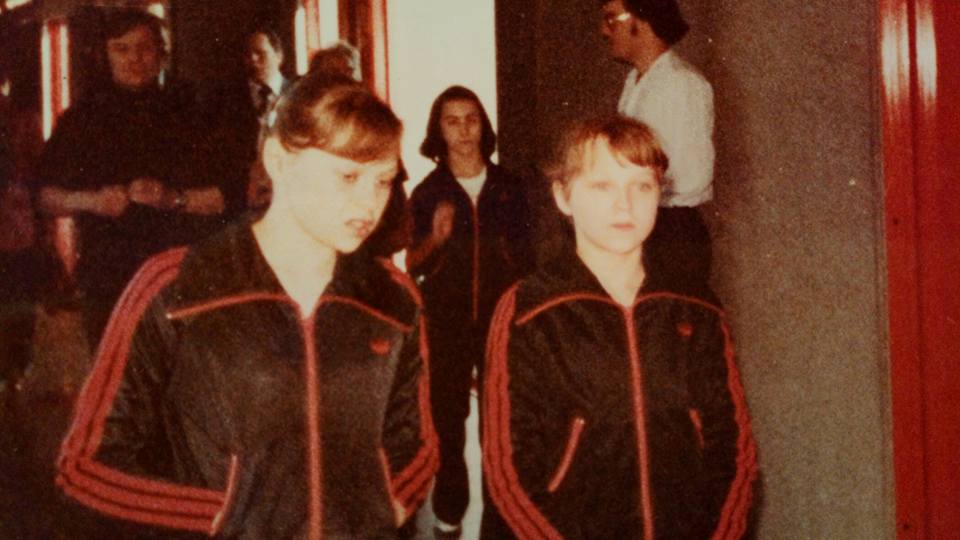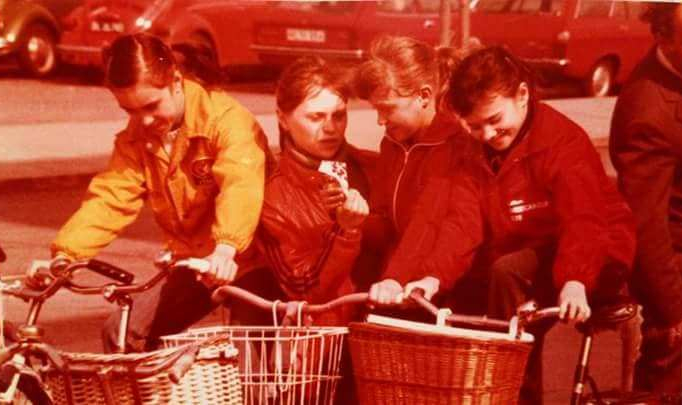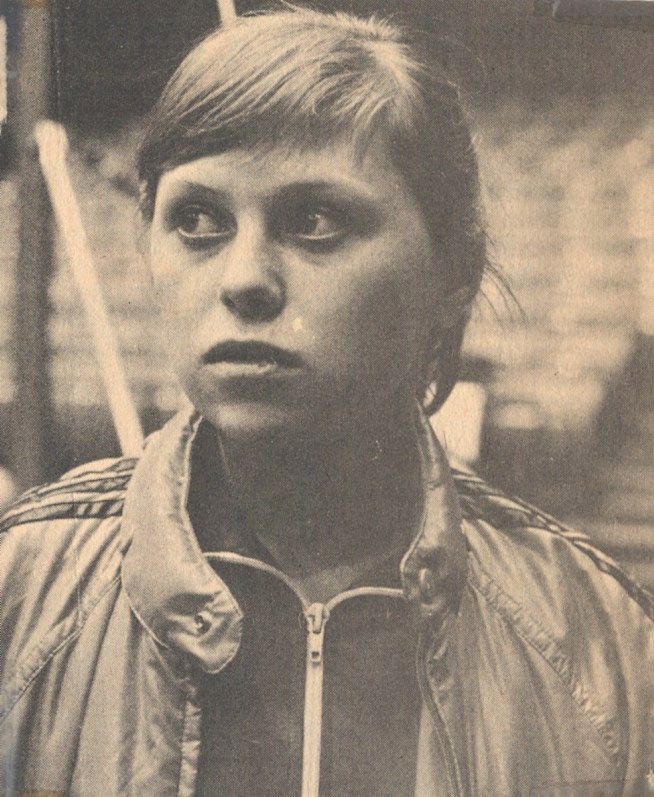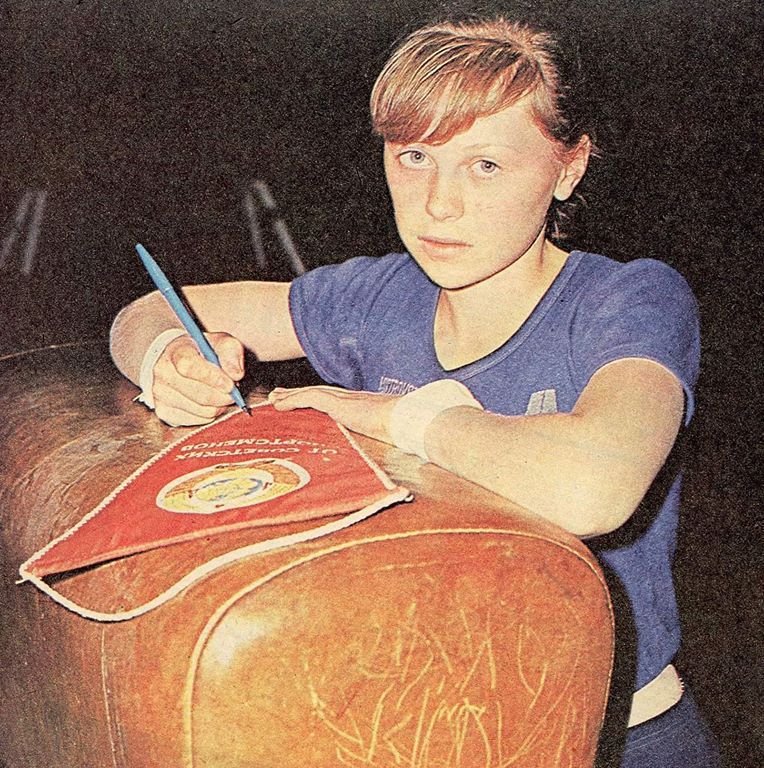This is a question that I have seen asked numerous times and I’m going to give my take on this hypothetical. For those who don’t know, I have the tendency to write about Elena Mukhina….a lot:
After Her Injury a Soviet Coverup Hurt Elena Mukhina Even More
How Fan Mail Bothered Elena Mukhina
Elena Mukhina’s Trip to America
Shortly After Her Paralysis Elena Mukhina Wrote a Letter
Elena Mukhina is best known for her performance at the 1978 World Championships where she won the All-Around (AA) title. Statistically, it is one of the most dominant wins in gymnastics history and the result made Mukhina the star of the Soviet program.
But by late 1979 Mukhina’s career was in shambles as she was first missing major competitions, and then seemed unable to regain her old form once she resumed high level training. This wasn’t Mukhina personally failing, but the inevitable cliff that every gymnast has to deal with as they get older. Sooner or later age, injury, and/or fatigue catches up with a gymnast. It is incredibly difficult for even Hall of Fame caliber gymnasts to maintain top form for more than 2-3 years.
It all came to a head at the 1980 USSR Cup where Elena Mukhina finished 14th in the AA. The competition is similar to the American Olympic trials, but not entirely. The USSR Cup was a strong indicator as to who would make the Olympic team, but it wasn’t a sure bet. If a gymnast finished 3rd or higher she almost always made the team. The only time a gymnast who finished in the top three did not make the team, was when she was replaced by a gymnast that had missed the USSR Cup entirely. Gymnasts who finished 4th and 5th usually made the team, but were at risk for a demotion.

At the 1980 USSR Cup Elena Naimushina finished 3rd, but it was effectively a 4th place finish as Nellie Kim had not participated. Naimushina had long been a child prodigy within the Soviet program. She won the lower division of the Junior USSR Cup in 1976 when she was 11 years old. She received some highly prestigious assignments in 1977, and in 1978 was on the Soviet display tours. Naimushina had been a “big thing” for as long as Mukhina had been. Whereas Mukhina had toured the world as the top star of the Soviet program, at every step of the way was the young Naimushina right alongside her. Being introduced as the adorable junior prospect who would be a great gymnast in the future.
Naimushina’s 3rd place finish at the 1980 USSR Cup probably did more damage to Mukhina’s Olympic dream than anything else. The Soviets also gave special consideration for fringe contenders that had potential in Event Finals. Naimushina had demonstrated such capability by winning the beam title at the 1980 USSR Championships. Naimushina competed at both the 1979 European Championships and the 1979 World Championships. They were the two most prestigious assignments a Soviet gymnast could be awarded after the Olympics. Naimushina had the experience, the results, and also the “right look.”
In the aftermath of Nadia Comaneci having breakout success at the 1976 Olympics when she was 14 years old, everyone was trying to find the next Nadia look alike who could provide a similar youthful appearance. Small, young gymnasts were significantly more popular than their older counterparts. Everyone knew this. Not only was Naimushina a marketing asset for the Soviets, her presence in the lineup and the favorable crowd response she generated would prop up the rest of the Soviet team as well.
Naimushina wasn’t just the right look, she was the complete package when it came to finding a gymnast with the ideal image every Eastern Bloc country was looking for. Naimushina excelled at interviews and dealing with foreign media. It was a stark contrast to Mukhina whose constant sad demeanor was often a liability. What this all meant was that Naimushina had “political favor” working to her advantage on top of everything else.
Naimushina had political backing, but it paled in comparison to the amount of political backing in support of Elena Mukhina. Mukhina was not only a famous gymnast, she was from Moscow. Before the arrival of Elena Mukhina, the Moscow clubs had been underperforming for a significant amount of time. Mukhina was the savior of Moscow’s reputation and as Soviet officials saw it, there was no better candidate for the Moscow Olympics than a hometown hero.
After the 1980 USSR Cup the Soviet selection process moved on to the training camps stage. This was the part of the selection process that truly mattered. It was at this stage where every Olympic and World Championships team was chosen. At this point, it was only due to her high-profile resume that Elena Mukhina hadn’t already been eliminated from consideration.
At the time of Mukhina’s injury Soviet officials had whittled their list down to eight gymnasts. With the exception of Nellie Kim who didn’t compete at the 1980 USSR Cup, every gymnast except Mukhina had finished 6th or better at that competition. The eight gymnasts were divided into two groups.
Group #1: Natalia Shaposhnikova, Elena Davydova, Nellie Kim, Maria Filatova, and Stella Zakharova.
Group #2: Elena Mukhina, Elena Naimushina, and Svetlana Agapova.
The first group had all been formally named to the Olympic team. Under different circumstances the Soviets might have been less likely to give such guarantees to as many as five gymnasts. But Shaposhnikova, Davydova, Nellie Kim, and Filatova are all members of the Hall of Fame. They were far too talented to be left off the team. Meanwhile Zakharova had won a medal on vault at the 1979 World Championships, and would do so again at the 1981 World Championships. Coupled with decent AA scores, Zakharova had punched her ticket to Moscow as well with such vaulting potential.

Three gymnasts remained. One would be an Olympian, one would be an Olympic Alternate, one would be neither. Their spots were not secure and they had been demoted to a separate training session. Because they had been training in two separate groups, Naimushina and Agapova were the only team members who had witnessed Mukhina’s accident.
Had Mukhina never been injured, there were three possibilities:
(1) Naimushina would beat out Mukhina.
(2) Mukhina would beat out Naimushina.
(3) Naimushina would beat out Mukhina, but the Soviets would still choose Mukhina for political reasons.
If only athletic considerations were being considered, I’d say Mukhina had only a small chance of making the team. But if both the athletic and political situations are considered, I’d say she had a fighting chance.
The Soviets frequently booted a gymnast from the team at the last possible moment. This had actually happened at three of the last four Olympics (1964, 1972, and 1976). It would also happen at the 1981 World Championships. So if Mukhina theoretically had been named to the team during the training sessions, the advantage would have turned to Naimushina as the Soviets debated the final lineup within the Olympic Village.
It all comes down to how serviceable Mukhina was. If Mukhina could show her 14th place finish at the USSR Cup was an aberration, she would make the team. When political and athletic considerations are on a collision course, it is usually podium training where one side finally loses. In podium training Naimushina had the advantage. She could prove she was both better than Mukhina and had the crowds on her side. When the Soviets performed a last second lineup change, most of the time they replaced an older gymnast with a younger gymnast. Naimushina was 15, Mukhina was 20.
Even if Mukhina hadn’t made the team, she most likely was going to be inside the competition arena as an alternate. Svetlana Agapova was in contention for that spot as well. But even though she had produced a superior result at the USSR Cup, she did not have the trump card of political favoritism working to her advantage. It is hard to fathom a scenario where the Soviets were so invested in a gymnast that had finished 14th in domestic competition, if not for the specific intent of getting Mukhina onto the Olympic team ahead of gymnasts like Agapova.
I do question if Agapova’s presence in the final selection process was to serve as a possible replacement to Mukhina in the event that Mukhina’s performance in training camp was so lackluster, the Soviets didn’t even want her as an alternate.
When a gymnast suffers a significant leg injury, generally speaking they don’t come back from that. Especially for a gymnast as old as Mukhina was. Mukhina was the 1978 AA Champion, but in both the 1984 and 1988 Olympic quads, the Soviets had left an AA Champion off their Olympic team. Having a recent AA title was not a guarantee for making an Olympic team in the Soviet program. Mukhina’s previous success was not enough to secure her spot.
Note: I wrote an article suggesting that perhaps Mukhina’s real window of opportunity was not the 1980 Olympics, but the 1976 Olympics.
But there is one nagging question that serves as a counter to all of this. If Mukhina was a gymnast past her prime and unable to compete at a high level, then why was she even training a Thomas Salto? It was a high level move that was more than enough to make an Olympic team. It leaves open the question as to whether she had already mastered less difficult moves that would have strengthened her case for the Moscow Olympics. Was the 1980 USSR Cup actually an aberration?

But another element to this story is that Mukhina was injured in Minsk. At the time her coach was over 400 miles away in Moscow trying to rally political support for Mukhina to receive a spot on the team. If Mukhina was capable of winning her spot via athletic merit, then why was so much effort being given to political channels?
It is not a coincidence that politics is such a major factor in this story. Politics are the reason this story exists at all. Mukhina was from Moscow and because of that, the Soviets were going to keep pushing her towards the Olympics regardless of how viable that goal was. What they weren’t expecting was for it to result in tragedy and destruction.
People constantly ask whether Mukhina would have made the Olympic team if not for her injury. The truth is we don’t know. What we do know is that it wasn’t a situation where Mukhina was guaranteed a spot even if she was healthy. The Soviets were debating between two gymnasts with a deadline rapidly approaching. It was going to be an intense battle as Soviet officials argued over the decision.
Mukhina’s injury made that decision for them.


I’ve just discovered your articles, they are fascinating and extremely empathetic. I have been a huge fan of Muhkina ever since I discovered her gymnastics and her tragic story, and it’s so nice to see that people continue to remember her and honour her career. I found this particular article of interest due to the inclusion of Svetlana Agapova in the equation – from the few videos I’ve seen of her, I’ve found her to be incredibly underrated. I recalled one video of her on bars where Cathy Rigby-Mason spent the whole routine commenting on her innovative moves (2 release moves in 78? Unheard of!) and perfect form, only for her to receive a surprisingly low score (I want to say 9.4, though I could be wrong) – it is so interesting to hear that she’d been in contention for the Olympic team, and I wish there was more information on her available!
LikeLike
Your articles on Elena Mukhina are detail-rich and much appreciated. I do not believe anyone has ever commented on the full-twisting Korbut flip element of her bar routine. While now a banned skill, the fact that she successfully performed it for many years speaks to her enormous athletic abilities. Also, the skill looks to be the most difficult (and dangerous) skill ever successfully performed. If so, she certainly deserves credit for ever daring and successfully doing such a skill. Perhaps you will consider doing an article on this aspect of the Elena Mukhina story. Finally, I’ve watched all the YouTube videos of her bar routine, but most are fuzzy, bad quality films. Is there any source for high quality film of her routines?
LikeLike
Elena is one of my all time favorite athletes. I don’t consider myself an aficionado on Elena but I’ve managed to garner a lot of information on her that wasn’t made available to people in the West. Most of it I had to have translated from Russian.
When you hear first hand accounts of what happened to Elena from her trainers, coaches, caregivers, and even interviews with Elena herself after the accident a very clear picture begins to take shape. Elena wanted to retire from elite gymnastics after 1978. But when she won against names like Nadia Comaneci and Nellie Kim nobody would let her leave. What happened next was the same old story that happens with FAR too many elite champions. They pinned all their hopes on her being a medalist at the Olympics and proceeded to work her WAY TO HARD to ensure her victory. She started to burn out from the intense training, one of her caregivers said she’d been using smelling salts to stay awake because she was SO exhausted.
Then the broken leg happened. But they were unrelenting. Klimenko put the Thomas Salto into her routine BECAUSE it was a roll out skill and wouldn’t require her to land on the bad leg. By then Elena WAS getting older, she didn’t want to do it anymore, and she was being trained within an inch of her life. Then… July 2, 1980 happened and that’s what it took to get her out of there permanently.
Would she have made the Olympics if she hadn’t been paralyzed? If she was still in 1978 shape, then absolutely. NOBODY else could even touch the Mukhina on floors or the Mukhina Flip on bars. Problem was there were third parties forcing overtraining and insufficient recovery time.
LikeLike
De todos los comentarios que he leído, el tuyo es el más acertado. MUKHINA era intocable en suelo, barras asimétricas, etc.
Mukhina era una gimnasta agotada física, mental y emocionalmente. Ella sabía que su pierna lastimada no le iba permitir un buen desempeño en los juegos olímpicos, por eso quiso dejar la gimnasia.
NO creo que nazca otra Elena Mukhina. Única.
LikeLike
For me the main question is ” Does she wanted to fo to the Olympics or not”? After watching, reading etc….. everything about her i couldn’t answer that question for sure. I mean i know what she is saying….that she didn’t and even wanted to quit even earlier in 1978 when won the World Championship, but her acts were so controversial at time. I mean she had her broken leg and bad performances in 1979…..she wasn’t in the main team, had chance because of bad shape to get what she wanted ( retirement from sport ) , the Klimenko visit to the federation board probably wouldn’t be successful in my opinion….or at least she still had big chance just to hear from him after his return that no need ot more training because she didn’t get place. And considering all that her behaviour was the opposite…..in absence of Klimenko she tried the most difficult element? Im asking why….she could just chill out or wait for the outcome calmly expecting to relieve herself hearing she didn’t get the place, but people she was training in that day desperately….. nervously with desire to complete everything. Is controversial…..so sometimes im asking myself is he really didn’t want that place, is everything was just Klimenko desire? Are we doing so much only for someone else project?
LikeLike
SOLO LO ENTENDERIAS SI TE ROMPES UNA PIERNA Y TE PONEN A PRACTICAR CUANDO AÚN NO TE HAZ CURADO DE LA FRACTURA.
EN LO PERSONAL CREO QUE ELLA SABIA QUÉ NO TENDRÍA UN BUEN DESEMPEÑO EN LOS OLIMPICOS CON UNA PIERNA LASTIMADA, POR ESO NO QUERIA IR A LOS JUEGOS OLÍMPICOS. ES MEJOR RECORDARLA CÓMO LA GRAN CAMPEONA QUE FUE.
LikeLike